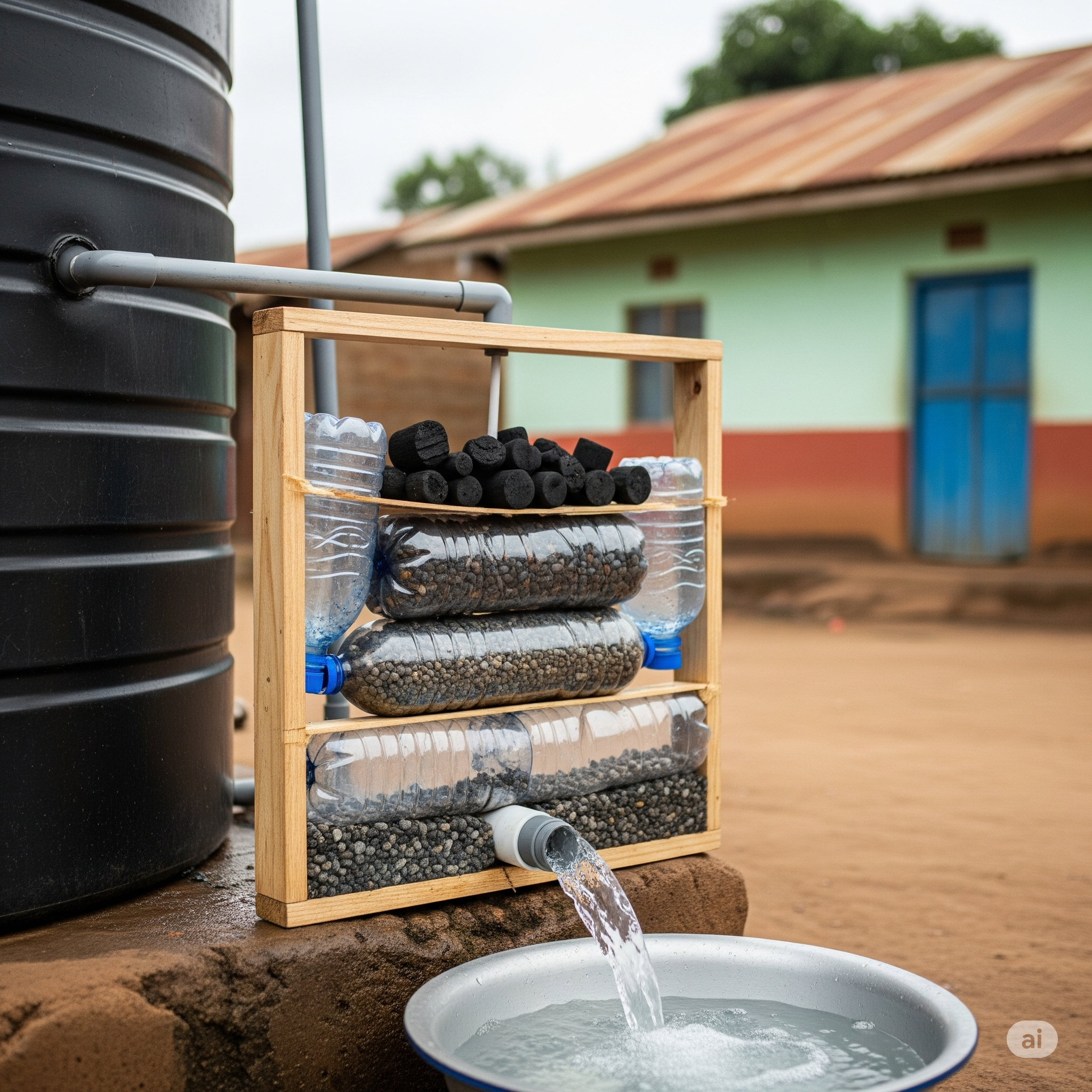Clean water is essential for the success of tank-based systems whether you’re storing water for domestic use, farming, or managing an aquaponics setup. Poor filtration often leads to algae buildup, foul odors, blocked pipes, and unhealthy conditions for plants and fish.
Fortunately, with materials readily available at your local hardware or agrovet, you can easily build a DIY water filtration system that works for everything from rainwater harvesting to gravity-fed tanks.
Why Filtration Matters for Kenyan Tank Users
Tank water, especially when harvested from roofs or boreholes, may contain:
- Dust, leaves, and other debris
- Algae or organic waste
- Harmful bacteria
- Odors and discoloration
Good filtration enhances water quality and helps extend tank lifespan particularly for poly tanks and IBC tanks. If you’re using solar-powered pumps, filtration also protects the pump’s lifespan and efficiency.
Common DIY Filtration Stages
| Stage | Function | Suggested Materials |
|---|---|---|
| Pre-filtration | Captures large particles | Mesh screens, roof guards, gravel |
| Mechanical | Filters sediments and dirt | Layers of sand, gravel, cloth |
| Biological | Breaks down bacteria and odor | Charcoal, bio balls, coconut husk |
Large-volume users should review Rainwater Pre-Filtration Tanks for scalable designs.
1. Gravel and Sand Filter
Simple, effective, and easy to build, this filter is great for homes with 1000–2000L tanks.
Materials:
- 100–200L drum or container
- Clean sand and coarse gravel
- Cloth or fine mesh
- Outlet tap at the bottom
Best For: Gravity-fed tank setups in homes and rental compounds.
2. First-Flush Diverter for Rainwater Harvesting
This smart DIY tool prevents dirty rooftop water from entering your tank.
How It Works:
- Collects the first few liters of rainfall in a sealed vertical pipe
- Once filled, clean rainwater is allowed to flow into the tank
- Reduces organic debris, dust, and fecal contamination
Detailed guidance in First-Flush Diverter Designs in Kenya.
3. Charcoal-Based Biofilter
Great for removing odors, chlorine, and pathogens in rain-fed systems.
What You’ll Need:
- 20L jerrycan or bucket
- Washed charcoal (activated if possible)
- Fine sand and cotton wool
- Spigot for outflow
Ideal For: Rainwater harvesting systems in off-grid or peri-urban homes.
4. IBC Tank Biofilter for Aquaponics
If you’re running an aquaponics system, effective filtration is non-negotiable.
Instructions:
- Use a separate 20–60L container
- Fill with bio balls, crushed lava rocks, or coconut husks
- Add an air stone for bacterial activity
- Connect between fish tank and grow beds
A clean IBC tank means healthier fish and better plant growth.
DIY Filter Maintenance Tips
- Flush pre-filters after each major rainfall
- Clean sand and gravel filters every 3–4 weeks
- Replace charcoal every 3–6 months
- Cover filters with mosquito mesh to avoid breeding grounds
Want more security for your water system? Add lockable tank enclosures for hygiene and protection.
Building your own DIY tank filtration system can dramatically improve your water quality, reduce maintenance costs, and support sustainable water use for homes, farms, and aquaponic gardens across Kenya. With just a few tools and the right layout, you’ll have clean water flowing year-round.
Explore More:



